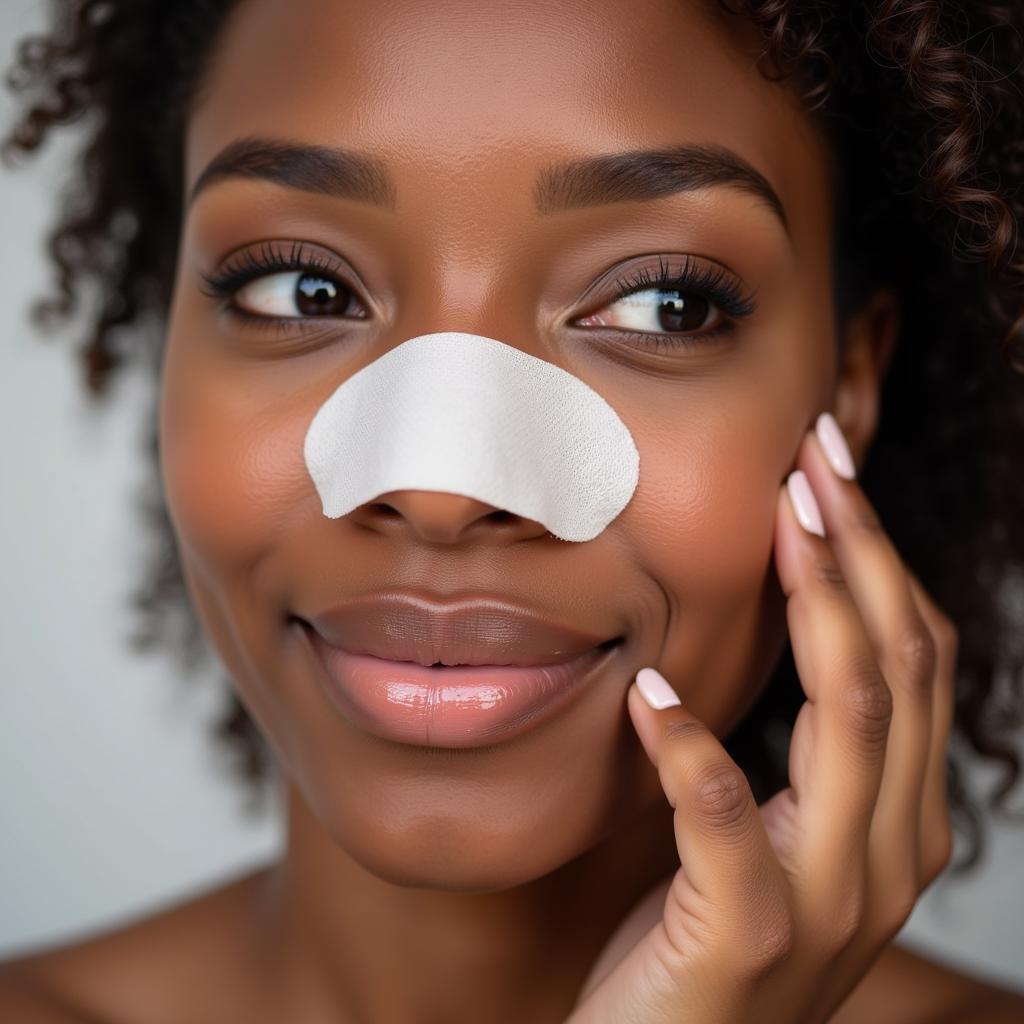Exploring the Rich World of African Cloth Texture
African Cloth Texture is more than just the feel of a fabric; it’s a testament to centuries of tradition, artistry, and cultural expression. From the intricate weaves of kente cloth to the vibrant mudcloth patterns of Mali, the diverse textures found in African textiles tell stories of heritage, innovation, and connection to the land. This journey into the world of African cloth texture will unravel the techniques, materials, and cultural significance woven into every thread. Check out some of the amazing traditional African ladies dress designs.
The Tactile Language of African Textiles
African cloth textures vary dramatically, reflecting the diverse climates, resources, and cultural practices across the continent. Rough, handwoven fabrics like raffia offer durability and breathability in warmer regions, while smoother, more densely woven textiles like Aso Oke provide warmth and protection in cooler climates. The texture isn’t just a practical consideration; it’s an integral part of the cloth’s aesthetic and symbolic meaning. Whether it’s the raised patterns of Adinkra cloth or the nubby texture of mudcloth, the tactile experience enhances the visual beauty and storytelling power of these textiles. If you’re interested in African fashion, be sure to explore African fashion magazines for the latest trends and designers.
From the bark of trees to the silk of wild silkworms, the materials used in African textiles contribute significantly to their unique textures. Cotton, often hand-spun and woven, creates a soft yet durable fabric, while raffia fibers lend a coarse and natural feel. The incorporation of natural dyes, derived from plants, minerals, and even insects, adds another layer of richness and complexity to the cloth’s texture and color. The process of dyeing itself can also influence the final texture, with some techniques resulting in a softer, more pliable fabric while others create a stiffer, more structured feel.
Weaving Stories: Traditional Techniques and Their Impact on African Cloth Texture
The techniques used to create African textiles are as diverse as the continent itself. From the intricate strip-weaving of kente cloth in Ghana to the resist-dyeing methods used to create Adire cloth in Nigeria, each technique imparts a distinct texture and visual character to the finished product. The complex interplay of warp and weft threads in kente cloth creates a richly textured surface, while the tie-dye and batik techniques used in Adire result in a slightly crinkled and textured fabric. These techniques are often passed down through generations, preserving cultural knowledge and ensuring the continuation of these unique textile traditions.
Mudcloth, a traditional Malian textile, showcases the power of simple techniques to create stunning textures. The process of dyeing the cloth with fermented mud and plant extracts creates a rich, earthy color and a slightly raised, almost velvety texture. This tactile quality adds to the cloth’s beauty and connects it to the land from which its materials are sourced. For those interested in unique African patterns, you can find more information on African Kuba pattern descriptions.
Beyond Tradition: African Cloth Texture in Contemporary Design
While rooted in tradition, African cloth texture continues to inspire contemporary designers around the world. From high-fashion runways to home decor, the unique textures and patterns of African textiles are being reinterpreted and incorporated into modern creations. This renewed interest not only celebrates the beauty and craftsmanship of these textiles but also helps to preserve and promote these valuable cultural traditions. Many designers are collaborating with African artisans to create unique pieces that blend traditional techniques with modern aesthetics, ensuring the continued evolution of these timeless textures. If you’re in Cape Town, consider visiting some of the vibrant African craft markets in Pretoria, where you can find a wide array of traditional and contemporary African crafts. You can also discover talented African fashion designers in Cape Town who are pushing the boundaries of textile design.
Conclusion: The Enduring Legacy of African Cloth Texture
African cloth texture is a powerful expression of cultural identity, artistic innovation, and connection to the land. From the rough, natural feel of raffia to the smooth, intricate weaves of kente, each texture tells a story and reflects the rich heritage of the African continent. As we explore the diverse world of African textiles, we gain a deeper appreciation for the skill, creativity, and cultural significance woven into every thread. By understanding and celebrating these traditions, we help ensure their continued vibrancy for generations to come. Continue your exploration of African cloth textures by delving deeper into the specific techniques and materials used across the continent.
FAQ
-
What are some common types of African cloth textures?
Some common textures include the smooth, intricate weave of kente, the rough texture of raffia, and the slightly raised patterns of mudcloth. -
How are African cloth textures created?
Various techniques, like weaving, dyeing, and embroidery, create different textures. -
What materials are used to create African cloth textures?
Materials range from cotton and raffia to silk and wool, influencing the final texture. -
What is the cultural significance of African cloth textures?
The textures often reflect cultural traditions, beliefs, and social status. -
How are African cloth textures used in contemporary design?
Designers are incorporating these textures into modern fashion and home decor. -
Where can I learn more about African cloth textures?
Resources like museums, cultural centers, and online platforms offer further information. -
How can I support African textile artisans?
Purchasing directly from artisans or supporting organizations that promote their work helps preserve these traditions.
Common Scenarios and Questions:
-
Scenario: You’re looking for authentic African textiles for a home décor project.
-
Question: Where can I find authentic African textiles, and how can I distinguish them from imitations?
-
Scenario: You’re a fashion designer inspired by African cloth textures.
-
Question: How can I ethically incorporate African textile designs into my work while respecting cultural heritage?
-
Scenario: You’re curious about the history and symbolism behind a specific African textile pattern.
-
Question: What resources are available for researching the history and symbolism of African textiles?
Further Exploration:
For more information on related topics, you might be interested in articles about African fashion, traditional clothing, or textile arts.
Contact Us
When you need support, please contact Phone Number: +255768904061, Email: [email protected] Or visit: Mbarali DC Mawindi, Kangaga, Tanzania. We have a 24/7 customer care team.


